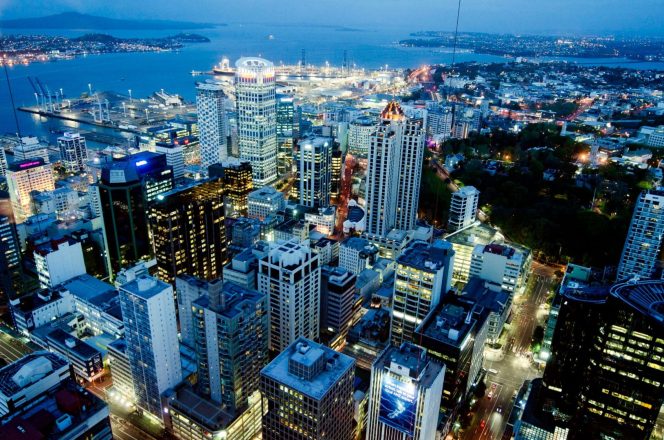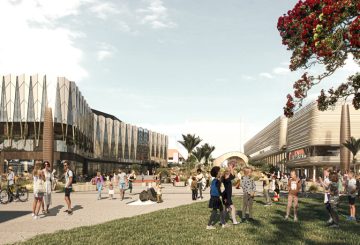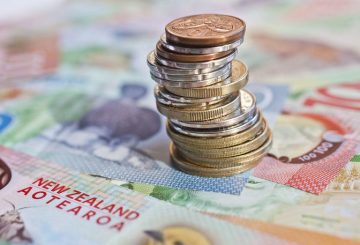Ang paglago ng ekonomiya ng New Zealand, na karaniwang tinutukoy bilang GDP, ay isa sa pinakamababang sa buong mundo. Gayunpaman, nauna pa rin ito sa ilang mga pangunahing ekonomiya, sabi ng International Monetary Fund (IMF).
Ang kamakailang ulat ng IMF ay nagha-highlight ng maraming mga kadahilanan para sa mabagal na pandaigdigang paglago kumpara sa bago ang pandemya:
- Ang COVID-19 pandemya pagkatapos
- Pagsalakay ng Russia sa Ukraine
- Tumataas na geoeconomic na naghihiwalay
- Mas mataas na mga rate ng interes ng mga sentral na bangko
- Pagtanggi ng mga presyo ng pandaigdigang
- Mga krisis sa sektor
- Mataas na utang na nagdudulot ng pinababang suporta
- Matinding mga kaganapan sa panahon
Hinuhulaan ng IMF ang isang bahagyang pagbaba sa pandaigdigang paglago, mula 3% noong 2023 hanggang 2.9% noong 2024. Ang paglago sa mga “advanced” na ekonomiya ay inaasahang bababa mula 1.5% hanggang 1.4% sa susunod na taon. Samantala, ang mga “umuusbong” na ekonomiya ay magpapanatili ng 4% na paglago.
Ang krisis sa pag-aari ng Tsina ay maaaring higit na mabawasan ang paglago, lalo na para sa mga bansa na nag-export ng kalakal tulad ng New Zealand.
Sa isang mas maliwanag na tala, nakikita ng IMF ang mas kaunting mga pandaigdigang panganib sa ekonomiya pagkatapos ng mga pagsisikap sa pagpapatatag ng pananalapi sa US at Switzerland.
Mga Larawan sa Paglago ng Pandaig
Ang paglago ng GDP ng New Zealand ay nasa 1.1%, inaasahang bababa nang bahagya hanggang 1% sa 2024. Kapag inihahambing ang mga rate ng paglago ng GDP sa 25 mga bansa, humahantong ang Macao na may 27.2% na hula para sa 2024, habang ang Equatorial Guinea ay nasa ibaba, na inaasahang bumaba ng 5.5%. Ang New Zealand, kasama ang iba pang mga advanced na ekonomiya tulad ng Alemanya, Japan, at Australia, ay malapit sa mas mababang dulo ng listahang ito.
Pananaw sa Inflation
Ang pandaigdigang inflation ay hinuhulaan na bababa mula 6.9% noong 2023 hanggang 5.8% noong 2024. Ang mga kadahilanan na nag-aambag sa pagbagsak na ito ay kinabibilangan ng mas mahigpit na mga patakaran sa pananalapi Noong 2024, ang mga presyo ng mamimili ay inaasahang tataas nang mas mabilis sa Australia (4%) at Singapore (3.5%) kaysa sa New Zealand (2.7%).
Mga hula sa kawalan ng trabaho
Ang New Zealand ay malamang na makaranas ng mas mataas na kawalan ng trabaho, na tumataas mula sa kasalukuyang 3.6% hanggang 4.9% sa pagtatapos ng 2024. Ang rate na ito ay maihahambing sa inaasahang 4.3% ng Australia para sa parehong panahon. Ang iba pang mga advanced na ekonomiya sa rehiyon, tulad ng Japan at Hong Kong, ay nagtataya ng mas mababang mga rate ng kawalan ng trabaho.
Mga Alalahanin Sa Pagbabago ng Klima at Geopolitika
Nagbabala ang IMF tungkol sa mga potensyal na spike sa mga presyo ng pagkain at enerhiya dahil sa malubhang mga kaganapan sa panahon o geopolitical kaguluhan. Halimbawa, ang pagsalakay ng Russia sa Ukraine noong 2022 ay humantong sa pagtaas ng gastos para sa gasolina, pagkain, at pataba. Ang anumang katulad na pagkagambala sa hinaharap ay maaaring humantong sa karagdagang pagkasumpungin ng merkado Hinihimok ng IMF ang mga bansa na mapabilis ang pag-ampon ng mga berdeng teknolohiya at tugunan ang mga epekto sa pagbabago ng klima.






























































